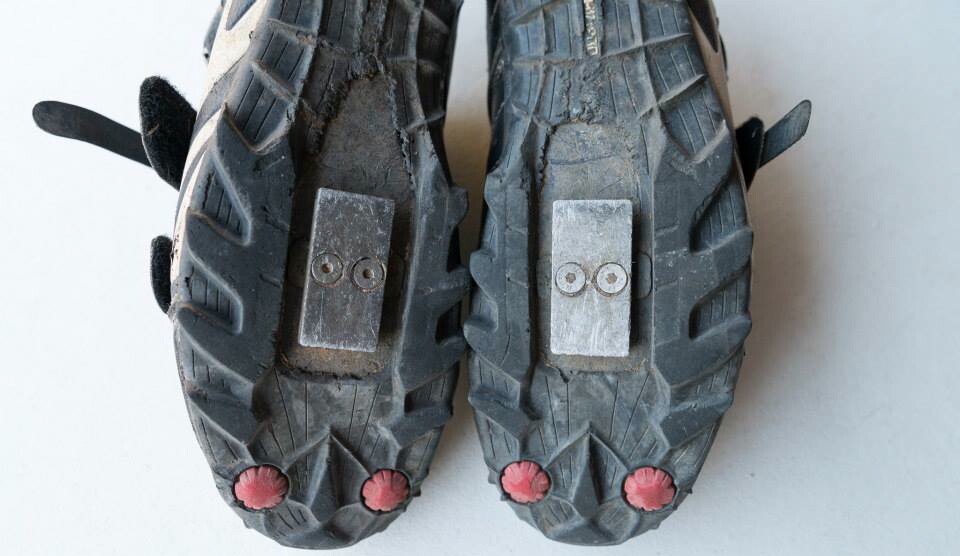So-called "clipless" bicycle pedals, in which a steel cleat in the sole of the rider's shoe clicks in and out of a mechanism in the pedal, are very popular with cyclists – they maximize pedaling efficiency, plus they help keep riders' feet from accidentally slipping off the pedals when going over rough terrain. Some riders, however, find them too difficult to quickly snap out of. Additionally, they don't work well with regular, non-cleated footwear. That's why Salt Lake City-based mechanical engineer David Williams has created the MagLOCK bike pedal.
The aluminum-bodied prototype device looks like a regular mountain bike/BMX-style platform pedal, but contains a stack of rare-earth magnets within a user-accessible compartment in the middle. Those magnets are attracted to another magnet, mounted in the sole of the rider's cycling shoe – the shoe magnets are compatible with mounting systems designed for the popular Shimano SPD cleats.
Whereas SPDs are disengaged from the pedal by twisting the foot to the side, however, the MagLOCK system requires the rider to pronate their foot to the left or right. According to Williams, this is a more instinctive movement, particularly for mountain bikers who suddenly feel themselves tipping over.

The amount of magnetic attraction between the pedals and shoes can be adjusted by adding or removing magnets within the pedals. This means that newbies could start with a minimum of force, so they can easily get their feet out as needed, but then increase the force as they get more comfortable with the system.
A maximum of over 50 lb (23 kg) of attractive force is reportedly possible. David claims that this is easily enough to keep the shoe attached to the pedal on upstrokes when climbing hills, and also when going over jumps.
... and yes, because they have the form factor of regular platforms, the pedals can also be used with ordinary street shoes when riders just want to commute or run errands.
In their present form, a set of MagLOCK pedals with a full load of magnets weighs in at a rather hefty 1,540 grams (54.3 oz). Down the road, however, Williams hopes to manufacture a polycarbonate version, that would be more in the range of 900 to 1200 grams (31.7 to 42.3 oz).
For now, though, you can preorder a pair of the aluminum pedals by pledging US$175 to the MagLOCK Kickstarter campaign. Shipping is estimated for next May, assuming the pedals go to production.
More information is available in the pitch video below.
Sources: MagLOCK, Kickstarter







